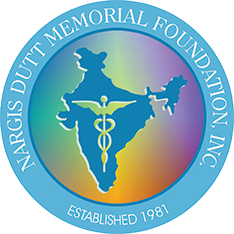General Facts about Cancer
C ancer can be defined as an unregulated, and uncontrolled growth of certain type of cells in the body. In the human body, cells follow some rules and regulations during their lifecycles. However, some cells, at some point, stop following any such regular controls and start dividing rapidly, and, randomly in an autonomous fashion. The terms carcinoma, melanoma, sarcoma, lymphoma and leukemia are used depending on tissue of origin of these cancer cells.
All cancers are caused by genetic mutations (change of genetic material from baseline) but only <5% of all cancers are hereditary (can be passed onto the next generation). A few better defined hereditary syndromes are for breast, ovarian and colo-rectal cancers. For most cancers, metastatic (stage IV) cancer remains incurable because as cancer patients survive longer, newer mutations arise and may make these cancer cells resistant to existing treatments and at some point in time, results in a very rapid growth over a short period of time.
Cancer is a common and major health care issue in the world. The age-standardized rate for all cancers (excluding non-melanoma skin cancer) for men and women combined is 182 per 100,000. The rate is higher for men (204 per 100,000) than women (165 per 100,000). In the US, 848,170 men and 790,740 women are expected to develop cancer in 2012 and an estimated 301,820 men and 275,370 women will lose their lives because of cancer.
In the US, lung cancer is the most common cancer causing death in both men and women. This is followed by hormone related cancer (breast cancer in women and prostate cancer in men) and then colo-rectal cancer. Lung cancer is very much a preventable disease because of its strong association with cigarette smoking. Because of decades of research and participation of patients, investigators and financial drives, patients with cancer are living longer and also maintain a relatively acceptable quality of life.
In the developing countries including India, there has been rapid increase in cancer cases. Several barriers exist in such countries in providing quality care to these patients. Because of these, the outcome of cancer patients is very different in these countries. One major issue still is expense of the treatments and availability of “state of the art” equipment for all. Only a small number (fraction) of these patients can afford to go to big hospitals that have opened in last few years. There a definite room and need to improve cancer care in such populations.
Prevention is better than treatment for any disease and it is especially true for cancer because of life threatening nature of this disease. Several scientific studies have been performed to look at various life style modifications which may prevent certain types of cancers. While the evidence is soft, the following are recommended guidelines by various cancer organizations:
- Fruits and vegetables may be protective against several cancers, including mouth, pharynx (part of throat), larynx (voice box), esophagus, stomach, lung, pancreas and prostate. Eating 5 servings of fruit and vegetables is recommended.
- Foods rich in fiber are probably protective against some cancers such as colo-rectal cancer.
- Red meat is associated with higher risk of developing colo-rectal cancer.
- Smoking is linked to many different cancers, including all head and neck cancers, lung cancer, esophageal, pancreatic, cervical to name some of them. Chewing tobacco or tobacco-products is also highly cancer causing especially cancer of the mouth and tongue.
- Alcohol in large quantities is also linked to several cancers, including risk of cancer of the mouth, pharynx, larynx, esophagus, and breast, as well as colorectal cancer in men. Alcohol also probably increases colorectal and liver cancer risk in women.
- There is relationship between physical activity and avoiding being overweight and several cancers such as colorectal cancer and cancer of the esophagus, uterus, pancreas, kidney, and breast (in women who have been through menopause).
- Vitamins and Minerals: These are essential nutrients and everyone needs these in adequate quantities. Deficiencies of these can result in several diseases. On the other hand, several of these nutrients in excess can cause side effects. A balanced approach is the best. There are no consistent data from the human studies to support their role in cancer prevention or treatment.
- Avoiding any exposure to known or suspected carcinogens (cancer causing substances) will definitely decrease the risk of developing cancer.
Author





